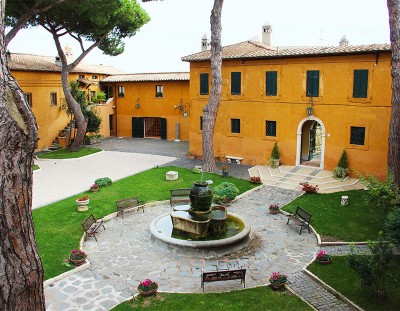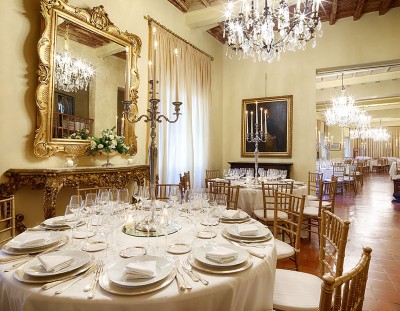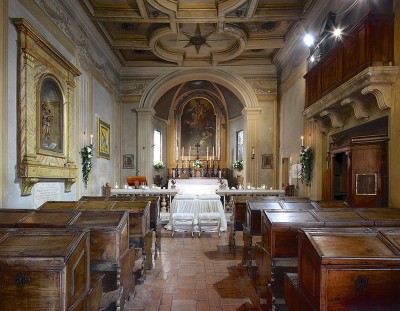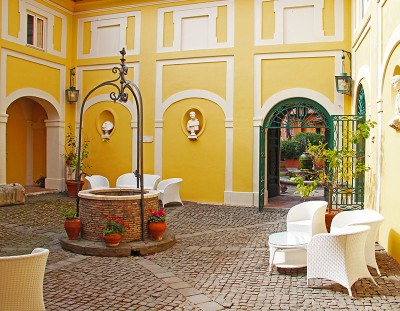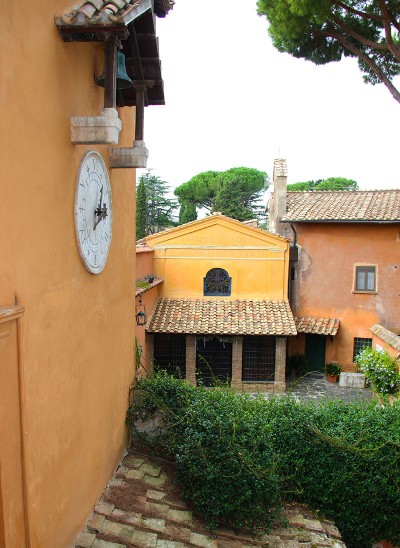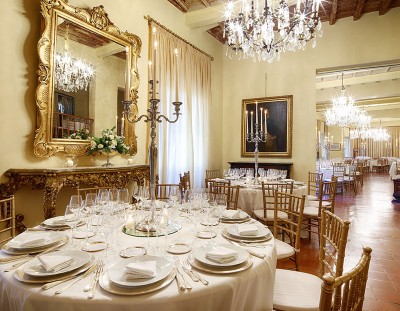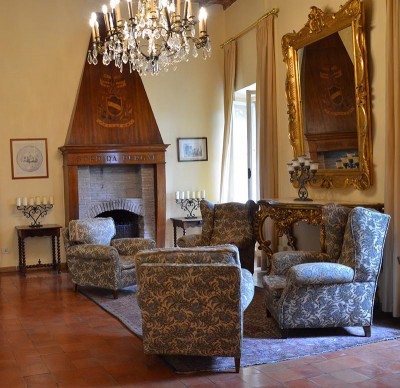Contact the abode
Eighteenth-century Castello di Decima still retains all the charm of its ancient past. Located just twenty minutes from the centre of Rome, and ideally positioned between halfway between the Fiumicino and Ciampino airports, it offers its guests all the beauty of one of the most evocative historical residences in Central Italy. The Castle is situated within the extensive natural reserve of Decima Malafede Regional Park. With its 6,145 hectares, the estate represents the largest protected area of the ‘RomaNatura’ parks system, the regional authority for the management of the system of protected natural Areas in the municipality of Rome.
Surrounded by green hills and a beautiful pine forest, our Luxury Country Castle is an oasis far removed from the hustle and bustle of the urban world, a peaceful and exclusive venue for hosting weddings, receptions, conferences, corporate meetings and high-level business gatherings. Castello di Decima’s strong connection to the past, evident through the numerous archaeological artifacts preserved within the castle, combined with its contemporary approach to hospitality, results in a perfect blend and provides a prestigious and distinguished meeting point. The ancient splendour is still resplendent in the interior halls, which can accommodate up to 300 people. Five capacious multi-functional rooms can adapt to every kind of requirement. Ancient fireplaces, frescoed ceilings, antique furniture and warm furnishings offer the perfect setting and enhance even the most prestigious of occasions. The outdoor spaces include a spacious courtyard with a garden and a wood-burning oven for freshly baked bread and pizzas, as well as an elegant inner courtyard where aperitifs and cocktails can be served. Imposing bastions surround and protect the privacy of the Castle, and it is also possible to arrange outdoor buffets with a breath-taking 360-degree panorama of the entire valley and the Roman countryside all around.
Inside the village, and incorporated within the castle complex, is the small parish Church of St Andrew the Apostle, which dates back to the 13th century. There is a portico in front of the church, which has a single nave and frescoed walls inside. The ceiling bears the cardinal coat of arms of the Torregiani family, its former patrons and chief restorers. The church is open to the public for Sunday Mass and ceremonies. Ample parking is available for guests in the large car park surrounding the residence.
THE HISTORY OF CASTELLO DI DECIMA
The Castle of Decima stands on the ancient Roman consular road that led to Naples, positioned at the 10th milestone. The lava stone slabs of the road are hidden beneath the asphalt surface of the old Pontina road, now called Via Clarice Tartufari. Important archaeological artifacts from the Latin civilisation were discovered near the junction leading to Pratica di Mare: a tomb with a chariot dating back to 750-725 B.C., a tomb destined for a woman from the mid-7th century B.C. and other findings are now preserved in the National Museum of the Middle Ages in Rome. There was a post for changing horses at the 10th milestone during Roman times. The Rocca's keep and the church are built on tuffaceous rocks and have Roman walls as their foundations, along with extensive underground areas, remnants of a Roman pool. There are Latin walls an an adjacent tuff plateau, which were possibly the remains of the ancient site of the town of Politorium, which was destroyed by Roman king Ancus Marcius. Despite the minor consular roads falling into disuse during the late Roman Empire, the village has always been inhabited.
Over the centuries, Castello di Decima has belonged to various illustrious owners. In 1768, Cardinal Luigi Torrigiani, Secretary of State to Pope Clement XIII, had a Palazzo built in Decimo on the existing structures and renovated the parish church dedicated to St. Anthony Abbot, along with the houses and warehouses in Decima Bassa, as they appear today.
In 1938, the estate was purchased by Count Romolo Vaselli from Rome, one of the most important and progressive entrepreneurs of the early 20th century, who immediately focused on improving the quality of the land. He had large canals built, and developed an internal road system, while many of the farmhouses were supplied with water and electricity. At the same time, he implemented progressive tobacco farming practices and established a modern fish farm. Many new roads were opened, trees were planted, and a pine forest was planted. Last but not least, he initiated a major land reclamation project which aimed at maintaining the agricultural character of the territory.
His heirs continued his work, with further restoration and ongoing improvements made to the park. Currently, the estate is part of the Decima Malafede Nature Reserve, which, with its 6,145 hectares, is the largest protected area in the RomaNatura parks system. The church, dedicated to St. Andrew the Apostle and part of the Tor de' Cenci parish, has an interesting coffered ceiling, displaying the Torrigiani coat of arms.
PLACES OF INTEREST IN THE VICINITY
Torre di Perna (10th century tower), Borgo di Torre Guidaccia (15th century village), Sant'Andrea Apostolo in Castel di Decima (13th-century church), Decima Malafede Nature Reserve (protected park managed by RomaNatura), Osteria del Malpasso (farmhouse restaurant), Castel Romano (shopping centre outlet).
